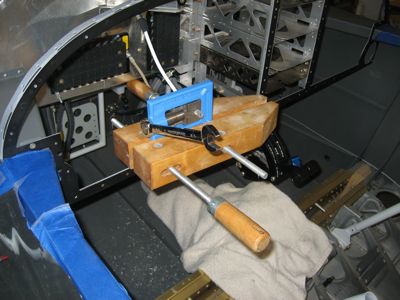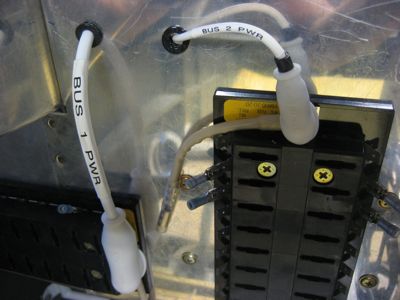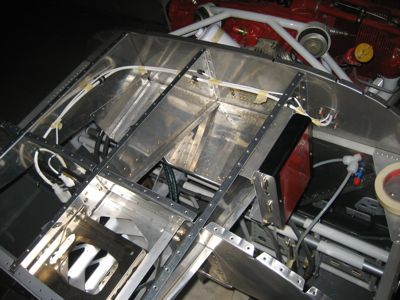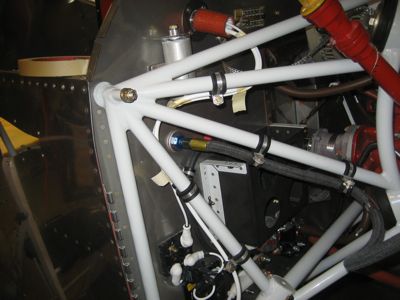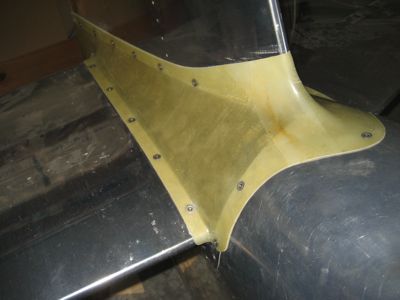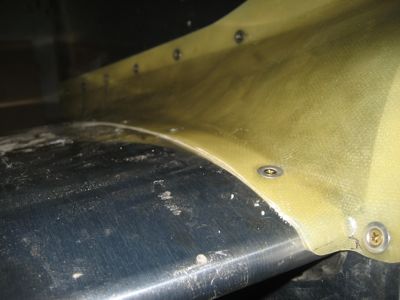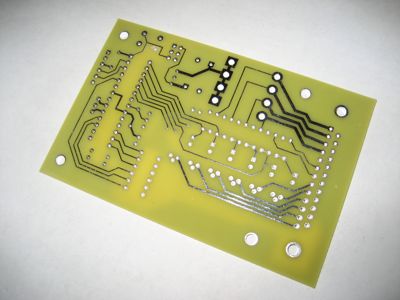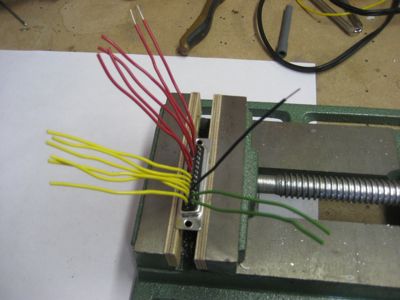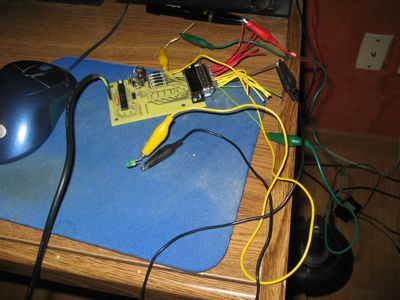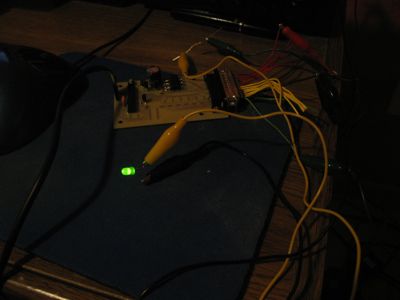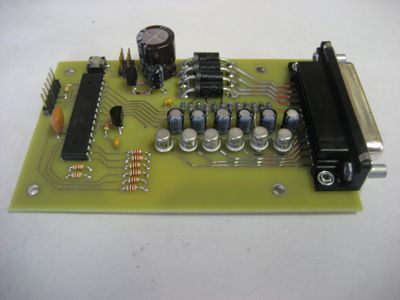I ran the 6 AWG wire that provides power to the main bus up from the current limiter, through the firewall, and across the cockpit to the main fuse block. This wire is clamped to the engine mount in three places, since it will form the spine of a whole bundle of wires that will run up and down the starboard side of the engine compartment.
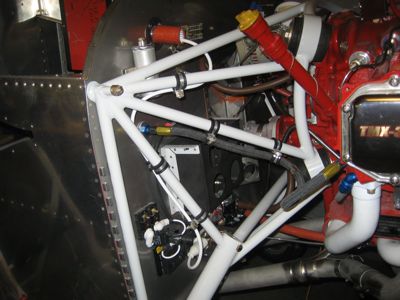
This was the first outing for my latest tool, a pair of vise grip pliers modified to hold adel clamps in position while you get the bolt in. Normally these are a giant pain to install, but the tool helped. I did find that I still needed to use the safety wire trick sometimes, which in conjunction with the pliers made installing adel clamps a relative breeze.
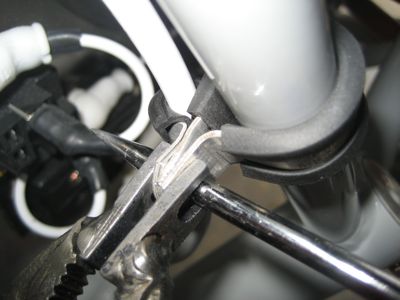
Closeup view of the bottom end of the wire, where it attaches to the current limiter:
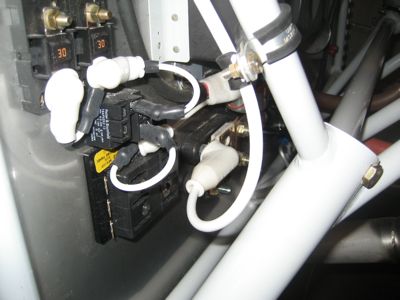
Up the side of the engine mount and through the firewall passthrough:
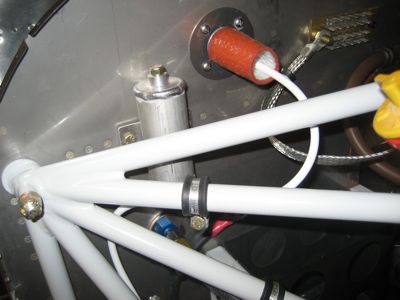
Inside the cockpit it takes a turn, goes through the subpanel ribs via a pair of snap bushings, takes another 90 degree bend into an adel clamp, and penetrates the subpanel through another snap bushing.
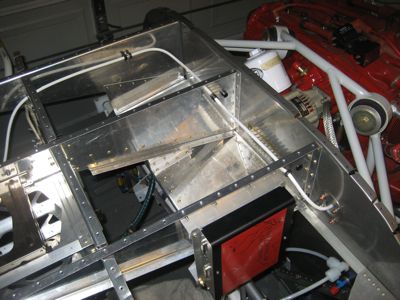
From there it dips down, and will eventually attach to the post on the main fuse block as soon as I can scare up the proper ring terminal for the end.
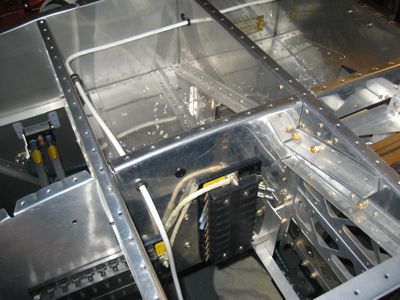
I also made some fusible links, which are visible in the picture above. These will be used to protect the wires that go from the two fuse blocks to the diode on the other side of the subpanel. They're just lengths of normal tefzel wire, four sizes down from the wire being protected (the wires to the diode are 10 gauge, so these links are 14 gauge). Over the wire is a fireproof silicone sleeve, in case the fusible link is called upon to do its thing. The idea here is that you use a fusible link anywhere you can't normally use a regular fuse or circuit breaker, but where you still want protection in the unlikely event of a short circuit.
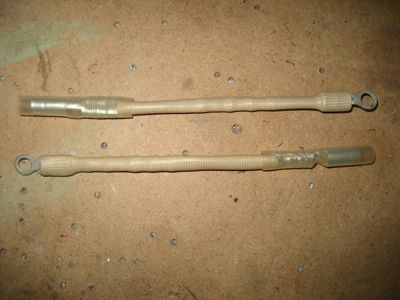
Not a lot of work on the plane lately due to too much time spent at the office, too much heat in the garage, and too much Mary away on the road (which you'd think would theoretically leave more time to work on the plane, but in reality I seem to always find myself at work instead). But this was a pretty good weekend.
